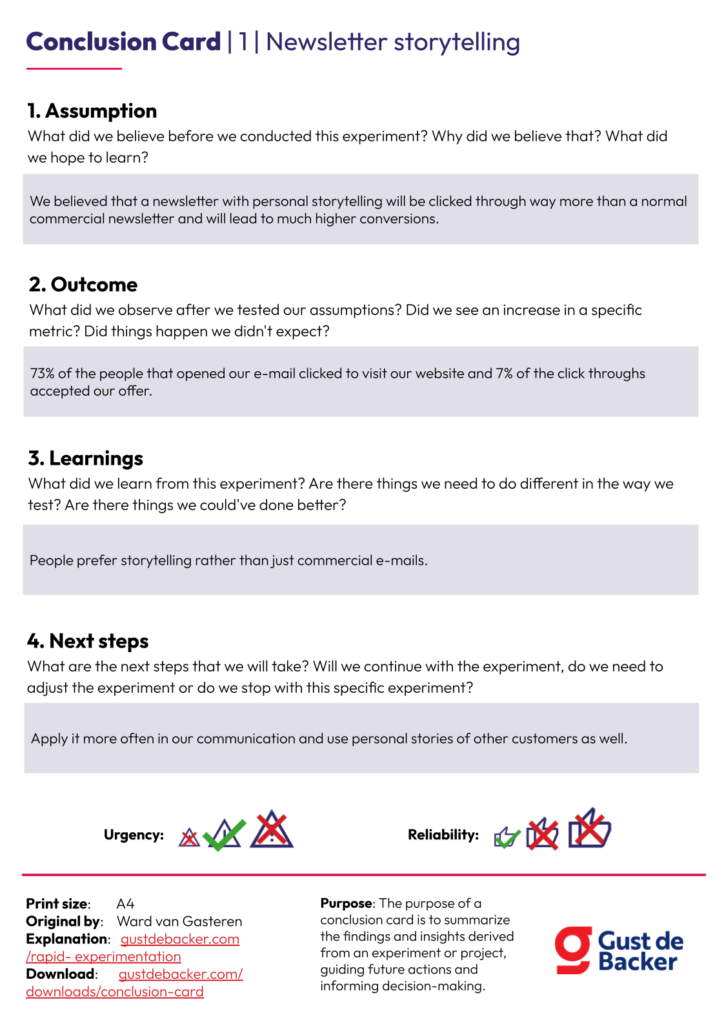What is an Experiment Conclusion Card?
The Conclusion Card is a structured format designed to help individuals and teams capture, interpret, and apply the results of their experiments. The Card contains key fields such as the original hypothesis, data collected, observations, conclusions drawn, and next steps.
The purpose of this tool is not to record the outcomes of an experiment but also to encourage critical thinking, promote dialogue, and inform future experiments or decisions. With a comprehensive understanding of the experiment’s results, users can effectively determine whether their hypothesis was correct and decide the best path forward.
What is the outcome of an Conclusion Card?

Using a Conclusion Card leads to a well-documented, analytical understanding of your experiment’s results. The structured format ensures that you capture all relevant information, reducing the likelihood of oversight or misinterpretation.
The card promotes effective communication among team members, providing a concise snapshot of the experiment, its outcomes, and potential next steps. In a broader context, the cumulative knowledge gained from consistently using Conclusion Cards can significantly enhance an organization’s capacity for innovation and agility.
Who’s a Conclusion Card for?
The Conclusion Card is a versatile tool, relevant for any individual, team, or organization engaged in experimental activities. From product developers testing new features, educators teaching the scientific method, scientists conducting research, to businesses running A/B tests or implementing Lean Startup principles, it is a universally applicable resource.
Its simplicity and flexibility make the card a valuable asset for those striving to make informed decisions based on empirical data and systematic analysis. Regardless of the field or scale of operation, any entity that values evidence-based conclusions can harness the power of the Experiment Conclusion Card.
How to use a Conclusion Card?
Fill in the Conclusion Card
- State Your Hypothesis
Begin by clearly stating your initial hypothesis, the prediction or assumption that your experiment aims to test.
- Detail Your Experiment
Describe the steps and methods employed in your experiment, capturing all the necessary details for future reference or replication.
- Record Your Data
Enter the raw data or observations gathered from your experiment. This can include both qualitative and quantitative data.
- Analyze and Interpret
Deduce insights from your data, evaluating whether the results align with or contradict your initial hypothesis.
- Draw Conclusions
Based on your analysis, draw conclusions. Validate or disprove your hypothesis and provide an explanation based on your findings.
- Plan Next Steps
Determine the future course of action, which could range from iterating the experiment, conducting a new one, or implementing the findings in practice.
What does it take to use a Conclusion Card?
Using a Conclusion Card requires an inquisitive mindset, a structured approach, and the ability to critically analyze and interpret data. While it takes only a few minutes to fill out, the value it provides in organizing thoughts and conclusions is immense. The exact amount of time spent will depend on the complexity of the experiment and the depth of analysis required.
Frequently Asked Questions
If your results are inconclusive, this too is a valuable outcome. It signals that your hypothesis may require revising, your experiment design may need adjusting, or that further testing is necessary.
Absolutely! The Experiment Conclusion Card is versatile and can be used in any experimental context, be it in a scientific, educational, business, or other setting.
By providing a standardized format for capturing and sharing experiment outcomes, the card fosters clear communication and mutual understanding within teams, enhancing collaborative efforts.
The card should ideally be used to capture the outcomes of every experiment you conduct. This consistent practice helps build a rich repository of learnings that can inform future experiments and decisions.



